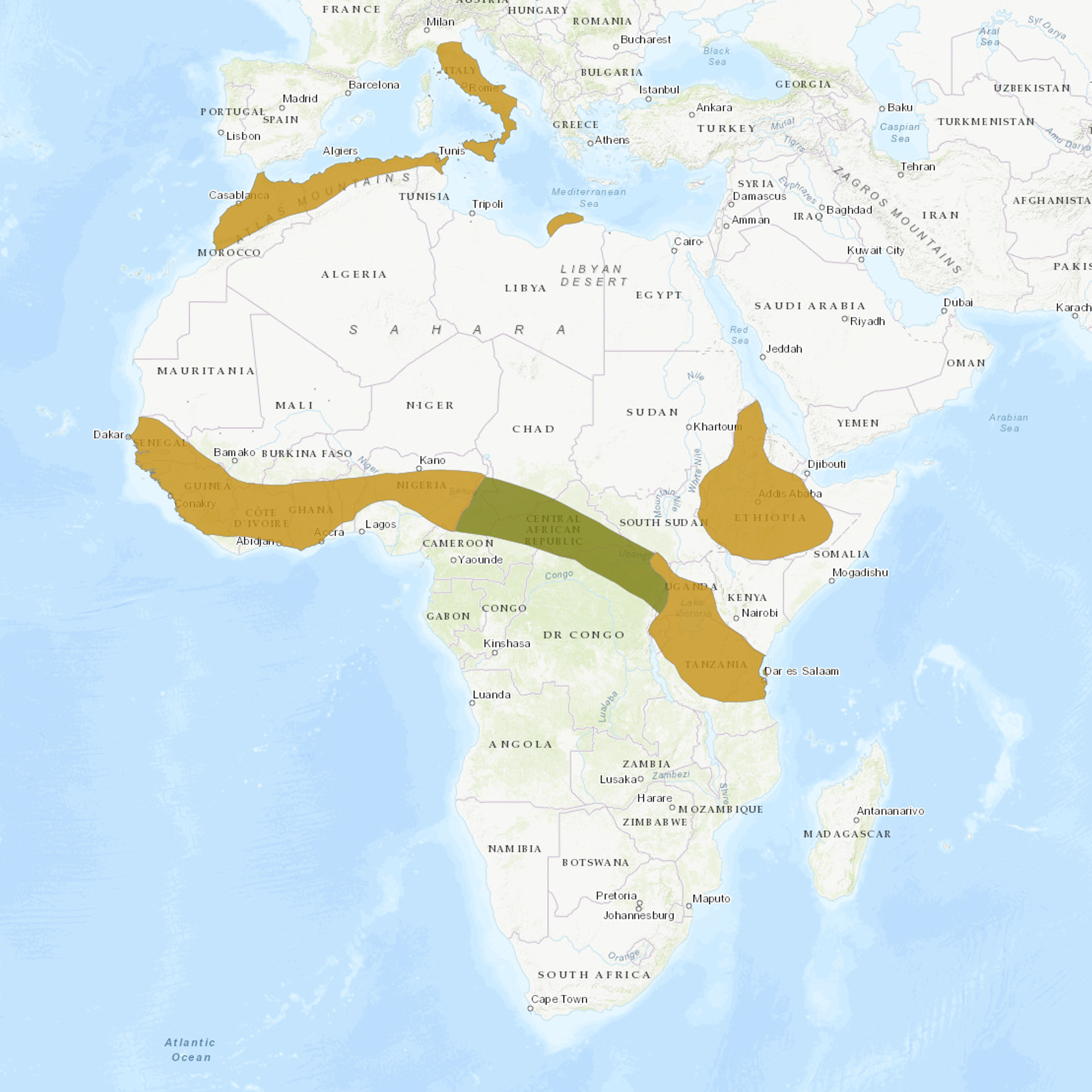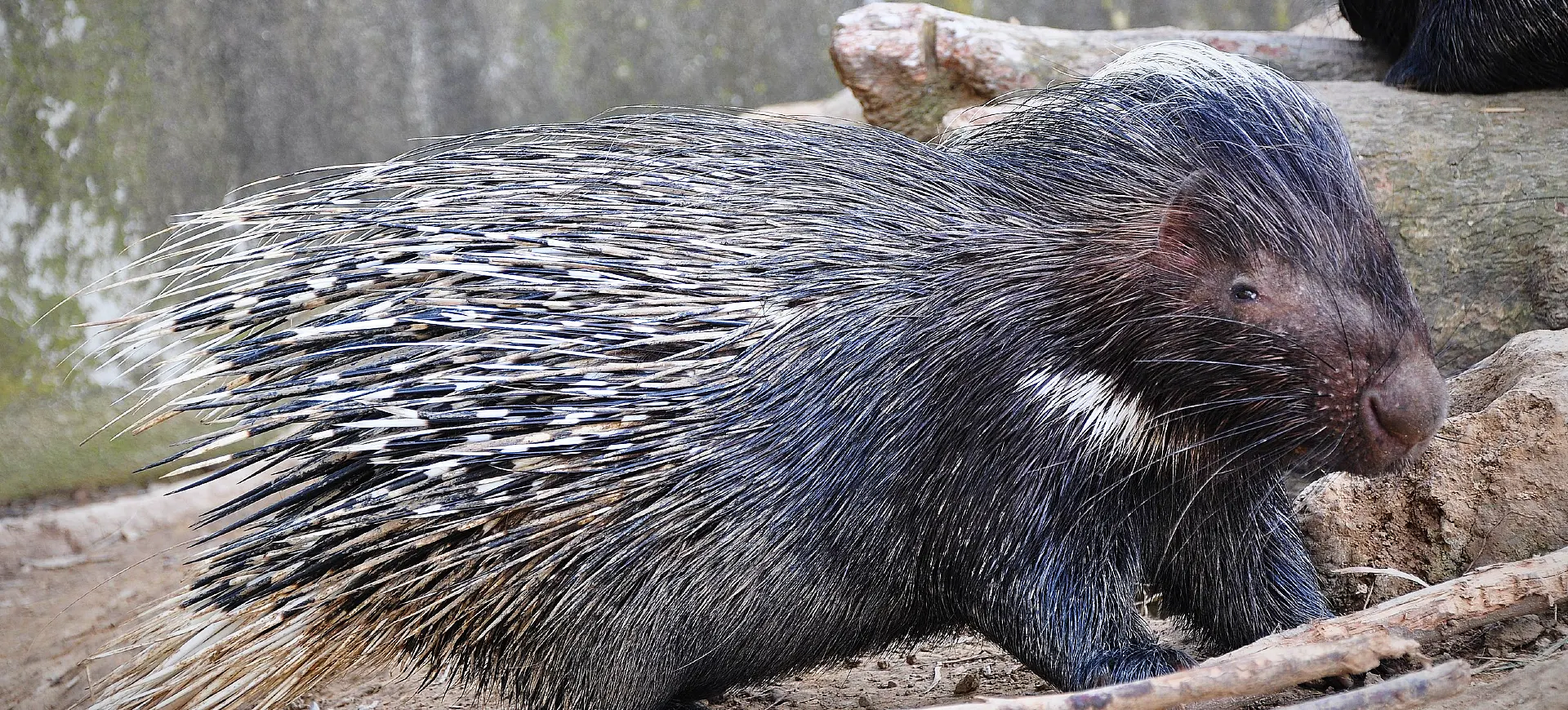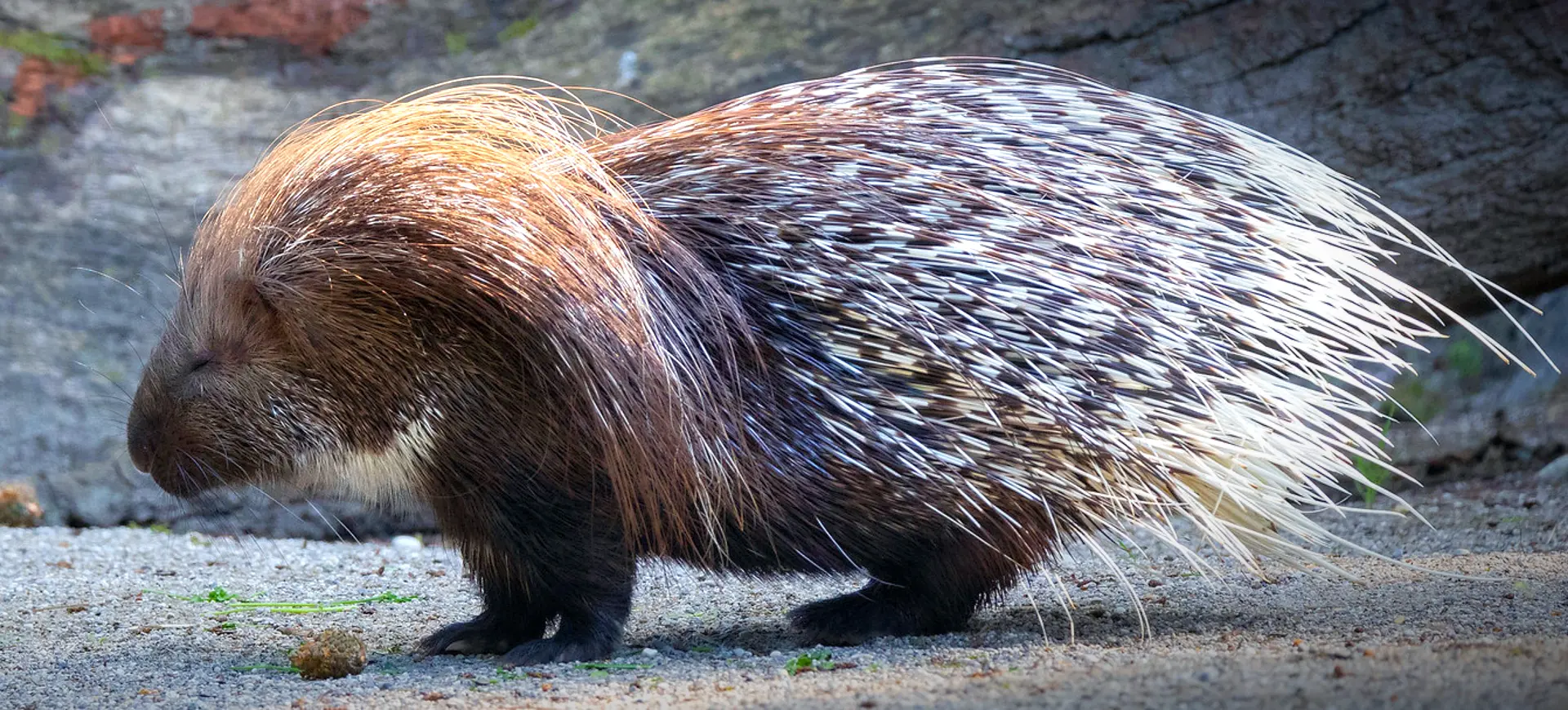Overview
The African Crested Porcupine is one of the largest rodent species native to Africa. It has a distinct appearance, with its spines, also known as quills, being its defining characteristic. These spines can be up to 20 inches long and are used for defensive and communicative purposes. The African Crested Porcupine primarily resides in hilly, rocky habitats and seldom in moist environments.
Unlike many other porcupines, the African Crested Porcupine is primarily nocturnal. They are highly adaptable and can survive in various environments, including forests, savannas, and even deserts. This adaptability allows them to be versatile in their diet, making them opportunistic feeders who consume plant matter and occasionally carrion.
In terms of behavior, the African Crested Porcupine is mostly a solitary animal. However, they sometimes form small family groups. The species is known to be very territorial and uses its quills as a significant means of defense against predators. When threatened, the porcupine raises its quills to appear larger and more intimidating.
Taxonomy
Kingdom
Phylum
Class
Order
Family
Genus
Species
Type
Current distribution:
The African Crested Porcupine is found throughout much of Africa, excluding the southernmost regions. It has also established populations in parts of Italy and Sicily. The species is not considered endangered and has a fairly robust population.
However, the expansion of agriculture and human settlements has led to habitat loss for this species. Despite this, they are highly adaptable and can live near human activity, often raiding cultivated lands for food. Their adaptability is a key factor in their wide distribution.
Physical Description:
The African Crested Porcupine has a coat of sharp quills which vary in length and thickness. These quills are black to brown in color and feature white or cream-colored bands. The animal’s underbelly is covered in a softer, bristle-like fur, generally brown or grey. The face and limbs are mostly furless, revealing a thick, leathery skin.
In size, this species of porcupine is considerable, being one of the largest rodent species in its native range. The quills make up a significant portion of the body’s length and add to its intimidating appearance. Unlike other species of porcupines, the African Crested variety cannot shoot its quills but can charge backward to impale a predator.

Lifespan: Wild: ~12 Years || Captivity: ~15 Years

Weight: Male: 44-66 lbs (20-30 kg) || Female: 33-55 lbs (15-25 kg)

Length: Male: 24-33 in (60-84 cm) || Female: 18-29 in (45-74 cm)

Height: Male: 10-12 in (25-30 cm) || Female: 8-10 in (20-25 cm)

Top Speed: 2 mph (3.2 km/h)
Characteristic:
Native Habitat:
The natural habitat of the African Crested Porcupine extends from the northern and sub-Saharan regions of Africa to parts of Italy and Sicily. They are primarily found in rocky, hilly areas and avoid dense forests and deserts. Although they prefer drier climates, they can adapt to various environmental conditions.
They are known to occupy various terrestrial habitats, including grasslands and savannas. They build extensive burrow systems, which they use for shelter and raising their young. These caves are often complex and can extend for several meters underground. They are usually located close to a reliable food source.
Biomes:
Biogeographical Realms:
Diet:
Diet & Feeding Habits:
The African Crested Porcupine is an opportunistic feeder leaning toward an herbivorous diet. They consume various plants, including roots, tubers, and bark. This species is also known to consume fruits and cultivated crops, leading them to be considered agricultural pests in some regions.
Their strong incisors allow them to break down tough plant materials effectively. They occasionally consume insects and small vertebrates, although plant matter forms most of their diet. They have been known to chew on bones to obtain minerals like calcium, which is essential for the growth and maintenance of their quills.
Mating Behavior:
Mating Description:
Mating in the African Crested Porcupine typically occurs after a period of courtship, which may involve vocalizations and displays of the quills. Once a suitable mate is found, the pair will copulate, often in the safety of their burrow. The female will then go through a gestation period before giving birth.
The female usually gives birth to one or two offspring at a time. These young are born with soft quills that harden shortly after birth. The offspring stay close to the mother and are cared for by both parents until they are old enough to fend for themselves. They become sexually mature at about 9 to 16 months.
Reproduction Season:
Birth Type:
Pregnancy Duration:
Female Name:
Male Name:
Baby Name:
Social Structure Description:
The African Crested Porcupine is generally a solitary animal but can form small family groups consisting of a mating pair and their offspring. These family units occupy a shared burrow system and are highly territorial. Interactions between family groups are rare, and conflicts are usually resolved through displays rather than physical aggression.
Communication within the group is essential for its social structure. The porcupines use a variety of sounds, including whistles, grunts, and clicks, to communicate with each other. The quills also play a role in communication; they are raised during excitement or agitation, serving as a visual signal to other group members or potential predators.
Groups:
Conservation Status:
Population Trend:
The African Crested Porcupine has a fairly stable population and is not currently considered endangered. Their ability to adapt to various habitats, including those altered by human activity, has helped maintain their numbers. They are widely distributed across Africa and parts of Europe.
Despite their adaptability, they face threats from hunting and habitat loss due to expanding agriculture and human settlements. These activities have led to localized declines in some areas. However, the species is generally robust and not at immediate extinction risk.
Population Threats:
One of the primary threats to the African Crested Porcupine is hunting. They are hunted for their quills, used in traditional crafts, and for their meat, considered a delicacy in some cultures. In addition to hunting, they are also considered agricultural pests and are often killed to protect crops.
Habitat loss due to the expansion of human activity is another significant concern. As agricultural lands spread, the natural habitat of these animals is increasingly fragmented. However, they have proven adaptable and can survive in altered landscapes, although this often brings them into conflict with humans.
Conservation Efforts:
While the African Crested Porcupine is not endangered, conservation efforts are geared towards habitat protection and sustainable hunting practices. Some local communities have implemented hunting quotas to ensure that the population remains stable. Educating farmers about humane deterrent methods can also help mitigate conflicts with these animals.
Regulations and community-based initiatives are being employed to protect their natural habitats. This includes designated protected areas where hunting and land clearing are restricted. Conservation organizations are also working to study the species more comprehensively to better understand its needs and threats.
Additional Resources:
Fun Facts
- The quills can be up to 20 inches long.
- They are one of the largest rodents in Africa.
- Unlike some porcupines, they cannot shoot their quills.
- They are considered agricultural pests in some regions.
- They are known to consume bones for mineral content.
- Can adapt to a variety of environments.
- Nocturnal by nature.
- Can live up to 20 years in captivity.
- They have complex burrow systems.
- Vocalizations include a range of sounds, from whistles to grunts.












